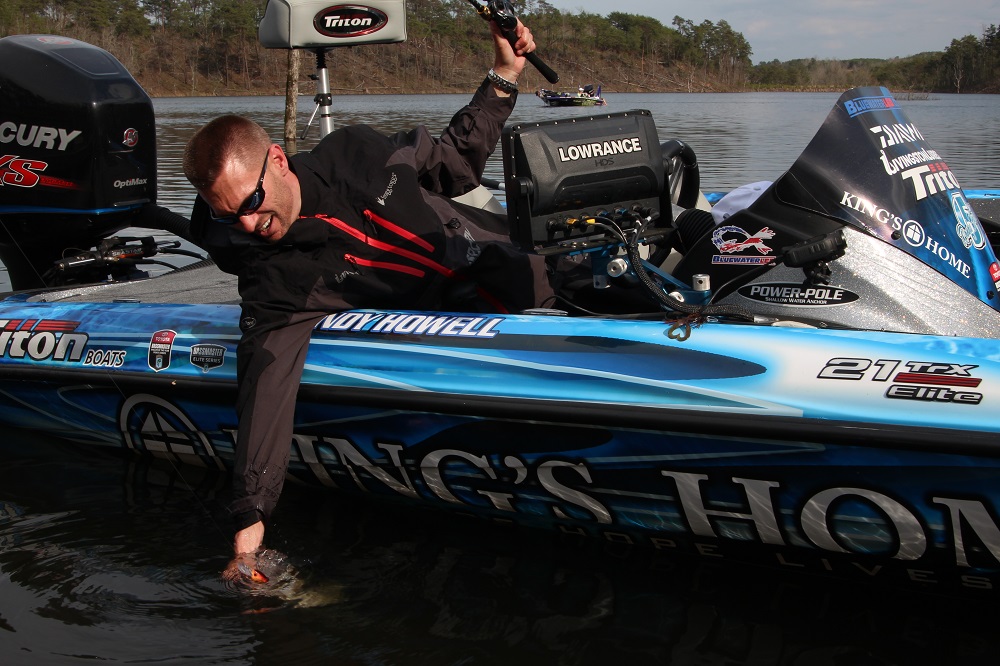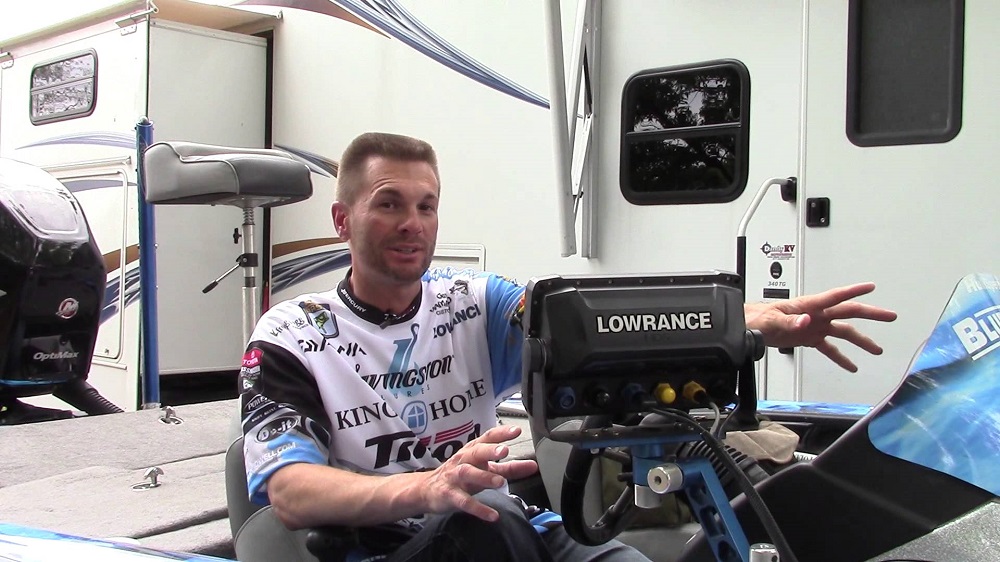 The use of electronics to break down a lake has allowed today’s angler to quickly and efficiently find bass. The setting of the 2016 Bassmaster Classic is Grand Lake, Okla., a sprawling body of water with 1,300 miles of shoreline and over 46,500 surface acres. The 2014 Bassmaster Classic champion Randy Howell plans to use several Lowrance technologies to help him contend for another Classic win.
The use of electronics to break down a lake has allowed today’s angler to quickly and efficiently find bass. The setting of the 2016 Bassmaster Classic is Grand Lake, Okla., a sprawling body of water with 1,300 miles of shoreline and over 46,500 surface acres. The 2014 Bassmaster Classic champion Randy Howell plans to use several Lowrance technologies to help him contend for another Classic win.
SETUP
Howell has his boat rigged with three Lowrance HDS 12 Gen 3 units. At the bow, he runs one unit with half of the screen dedicated to traditional sonar and the other half of the screen split into DownScan and SideScan.
At the console Howell mounts the other two units, with one in the dash and one on a side mount. The unit mounted into the dash is strictly for mapping while the side-mounted unit is set up like his bow unit.
SIDESCAN
Howell uses SideScan often to find both bass and baitfish and plans to use this as soon as he hits the water for practice at Grand. “I use this most often when I am idling to see how deep the fish are and to look for schools of baitfish,” he said.
Grand Lake is full of multiple fingers and pockets and SideScan allows Howell to quickly find out if they are going to be productive. “Before we had SideScan, we had to zigzag our way all over the place in the back of these places,” said Howell. “Now, we can just idle in and out and see everything we need to see to determine if there are any rocks, timber or fish in there.”
One key to getting the most out of your SideScan is setting it up properly. ‘That’s the important thing; you want it to be set at the right range, so you can see all of the details,” he explained. “If it is between 20- to 30-ft, I like to have it set to 50-ft to each side. If it is less than 20=ft deep, I will bring it back to 40-ft to each side,” he shared.
DOWNSCAN
The use of DownScan allows anglers to get an understanding of the water below. Randy Howell uses it heavily and in conjunction with traditional sonar and SideScan. “I’ll often find things with SideScan and then get above them with DownScan to see more detail,” shared Howell. “It lets me pick apart the cover and determine things like the size of rocks and how far apart they are.”
For Grand Lake, Howell will use DownScan for rock, but also for another type of structure that is sure to play a role in the Classic: sunken brush piles.
GRAND’S BRUSHPILES
Locating brush piles may be the path to this year’s Classic trophy. Howell made a pre-practice trip and located many of them. He found them with the use of his Lowrance units and also some general knowledge of where people plant them.
“Most people who plant brush piles do it in a fairly predictable way. You will often find them on flat points in even depth numbers, like 10- or 20-ft and then also right off the end of docks where people have pushed them from their own docks,” he said.
Using this as a starting point, he uses SideScan to find and then mark them with a waypoint.
To quickly be able to find them again, Howell adds a detailed description along with a symbol showing a tree. “I’m very specific when I add the detail and will type in all of the information like how many brush piles, how many bites I got there and everything else I can think of, so I don’t forget it when I come back,” he added.

STANDARD SONAR
With all of the advancements in technology, traditional sonar still plays a role for the weekend angler and touring pro. Howell uses it more for fishing in the moment versus looking for fish. “I still always watch it when I am driving around to see if I notice any quick jumps in depth, but with the great mapping we have now find those hidden spots does not occur as often. For me, sonar is more for when I am vertically fishing and watching the fish react to baits, which could play a role at Grand if I am on a jigging spoon or dropshot bite,” he added.
MAPPING
The mapping software offered by Lowrance is sure to help Howell in the upcoming Classic. “This time of year those long fingers with deep channels and drains in the middle of them could be really good,” said the 2014 Classic champ. “There may be ten in a row and only two or three of them have what I am looking for and just by looking at the map, I can find which ones to hit. It is a real time-saver.”
Mentioning the advancements in the Lowrance Insight Genesis Social Mapping Layer he said, “The great thing about this is there are so many people adding more detail to the map and it is really the most detailed and up-to-date map you will have of a certain lake.”
At the 2016 Bassmaster Classic, Randy Howell will have all of the tools he needs to contend for the win. By utilizing his electronics as well as his experience with finding bass and structure, Howell has a solid game plan for Grand Lake.


 Advertising
Advertising